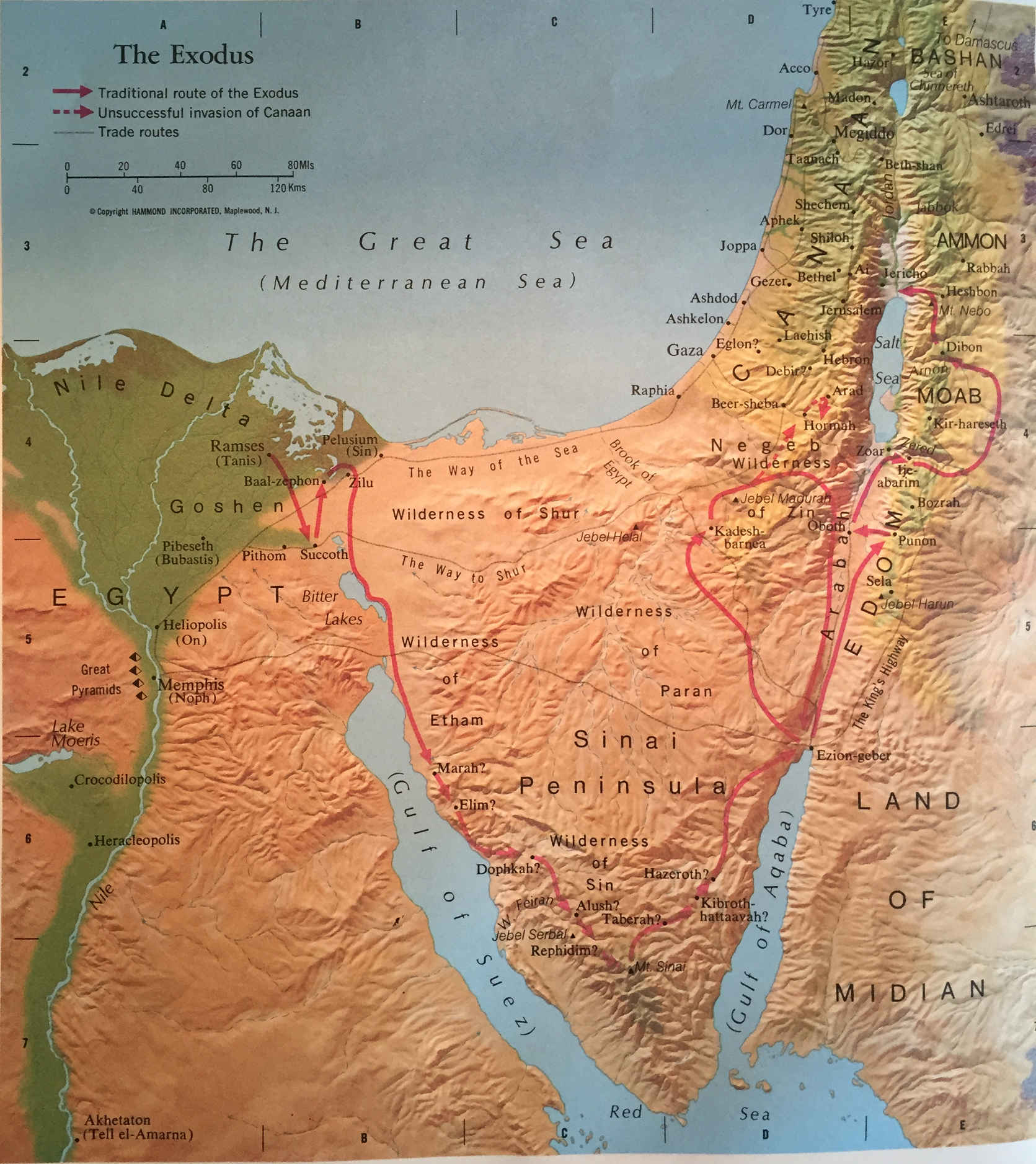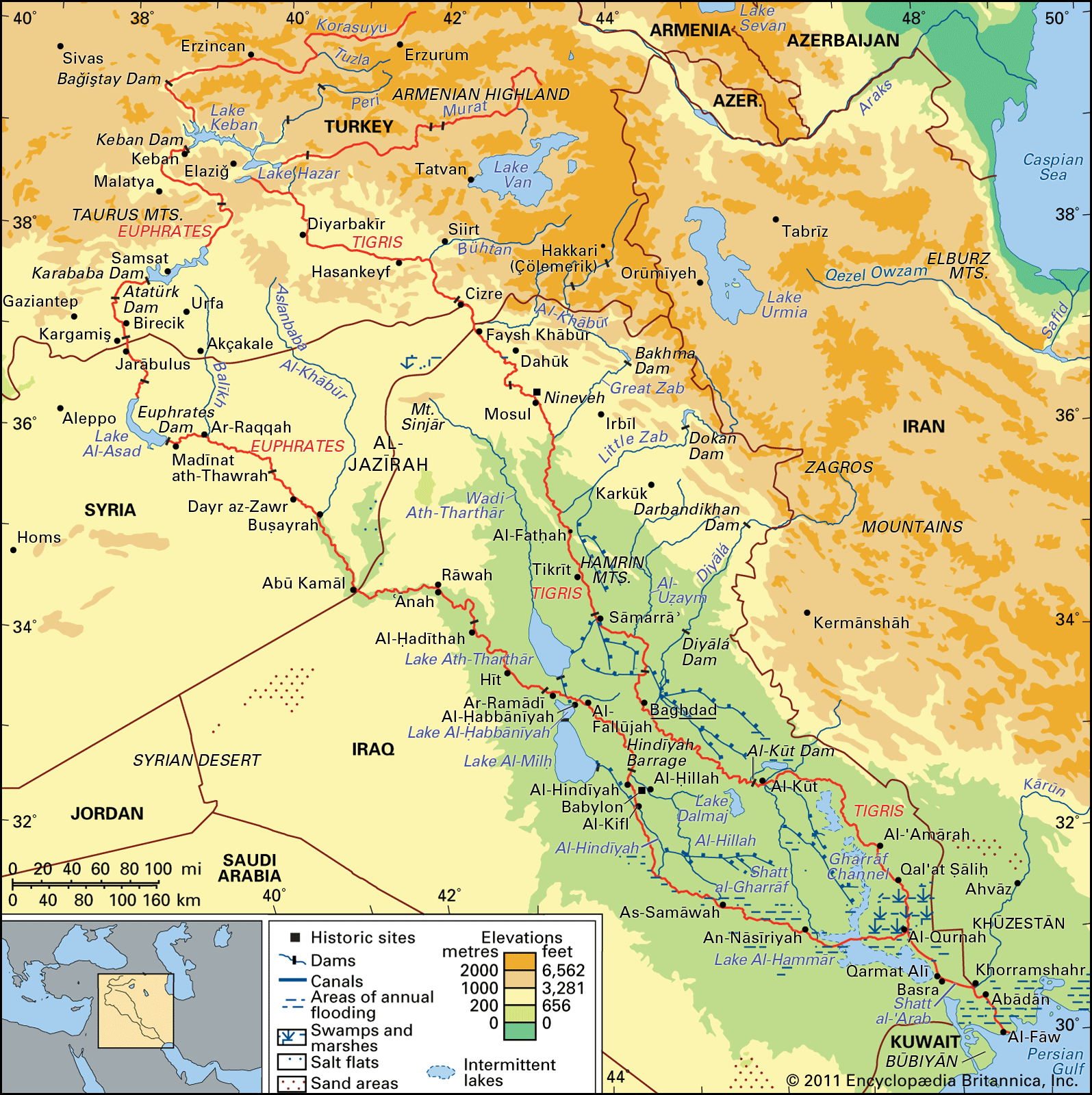Name: David
Question: What area is the Biblical “land of Nod” today? Thank you for your insight.
Answer: Thank you for the question David.
The Land of Nod is where God banished Cain after he murdered Abel. This was also the land where Cain found his wife. Unfortunately, we will not be able to pinpoint the location, but through a little investigative work, we can get a good idea of where the Land of Nod was.
As I’ll explain in this study, the Land of Nod was no doubt among the countries of Asia.
Let’s cover the details.
The Land Of Nod And Cain
The word “Nod” means,
Vagrancy; Nod, the land of Cain: – Nod.
“Vagrancy” means “homelessness.” This aligns with Genesis 4:12 where God told Cain he would be “a fugitive and a vagabond shalt thou be in the earth.”
If we look up the root word for “Nod” it means,
Exile, wandering.
The Land of Nod was a land of wanderers, and that is where Cain spent his days. I also want to take note of the word “Cain” which means,
Kajin, the name of the first child, also of a place in Palestine, and of an Oriental tribe: – Cain, Kenite (-s).
We know Cain became a wanderer, and we now know his tribe was established in the “Orient” among “the countries of Asia.” So it seems logical to believe the Land of Nod was somewhere in Asia.
There is no other information about the Land of Nod in the Bible. However, if we can identify where the Garden of Eden was, that will provide us with even more certainty as the Land of Nod was “on the east of Eden.”
The Four Rivers Of Eden
In Genesis 2:10 we are told,
And a river went out of Eden to water the garden; and from thence it was parted, and became into four heads.
If we can identify these four rivers, we will have a good idea of where the Garden of Eden was, and with that, we will know east of that location was the Land of Nod.
Let’s try and identify these rivers today.
The Pison River
Genesis 2:11-12
11 The name of the first is Pison: that is it which compasseth the whole land of Havilah, where there is gold;12 And the gold of that land is good: there isbdellium and the onyx stone.
Now, these first two rivers; Pison and Gihon are difficult to identify. So it’s going to take a bit of extra work. We are told the Pison River surrounded “the whole land of Havilah.”
In order to identify the land of “Havilah” turn your Bible with me to,
Genesis 25:18
Also: 1 Samuel 15:7
And they dwelt from Havilah unto Shur, that is before Egypt, as thou goest toward Assyria: and he died in the presence of all his brethren.
So we are being told, the land of Havilah is between the land of Egypt and the land of Shur, just as you look toward “Assyria” or “Asshur,” which was a city in Assyria. Looking at the center of this Assyrian Map, go northeast just south of Niniveh and you will find Asshur.
If you reference this Exodus Map (below) you will see “The Wilderness Of Shur” near the center, right below The Great Sea. So Havilah must have been just west of Shur and just east of Egypt. Generally speaking, these would be some of Moses’ stomping grounds.

Let’s put this together.
We know the Pison River “compasseth the whole land of Havilah.” “Compasseth” means, “surround or border.” So the Pison River must have bordered the northern portion of “The Wilderness Of Shur” stretching across the mountain ranges of Sinai and Midian which would place the Pison River west of the Euphrates River.
Even so, there is not a specific river we can identify today that fits here. The river most likely vanished with time, due to changes in earth’s topography. However, we do have a general direction that still helps us.
Let’s attempt to identify the next river.
Study and news with a fresh Christian perspective in your inbox.
The Gihon River
Genesis 2:13
And the name of the second river is Gihon: the same is it that compasseth the whole land of Ethiopia.
There is quite a bit of doubt over the location of the Gihon River. In fact, the word “Ethiopia” is typically translated as “Cush” in newer versions of the Bible, and even that is most likely in error.
Many scholars agree, we are not talking about the land of Ethiopia here.
E.W. Bullinger believes the Gihon River is,
“E. of the Tigris. The modern Kerkhah, and ancient Khoaspes (Choaspes), rising in the mountains of the Kassi. Kas has been confused with the Heb, Cush. It is not the African Cush or Ethiopia, but the Accadian kas.”
The Companion Bible, Genesis 2:13 margin note
John H. Marks states,
“Cush here probably refers, not to Ethiopia, but to the land of the Kassites in the mountains of east of Mesopotamia.”
The Interpreter’s Commentary on the Bible p. 5
If we reference this ancient trade route map, it shows us where the Kassites (Semitic people, Akkad, Akkadian) once lived, in the mountains east of Mesopotamia.
I want to provide you with a little more detail so you can understand the location of this river. The Columbia Encyclopedia states,
“Karkheh (kär´kĕ), ancient Choaspes, river, c.350 mi (560 km) long, rising in the Zagros Mts., W Iran, and flowing S into the Khuzestan lowland, where it forms a swamp bordering the Tigris River.”
Remember, one of the qualifiers in Genesis was the four rivers split from one main body of water. Encyclopedia Iranica adds,
“The Karḵeh does not flow into the Persian Gulf. Instead, it discharges its waters into… the great inland basin stretching from Khuzistan to the lowlands of the Euphrates-Tigris interior delta.”
Karḵeh River
When we put this all together, the Gihon River is the Karkheh River of today which flows from the Kassi Mountains (known as Zagros Mountains) into the Tigris River before emptying into the Persian Gulf.
If this is accurate, that would place the Gihon River in Iran just east of the Tigris River. This all perfectly aligns with the qualifiers in Genesis 2:10, for the rivers from the Garden of Eden.
Now, let’s identify the location of the next two rivers.
The Hiddekel and Euphrates Rivers
Turn your Bible with me to,
Genesis 2:14
And the name of the third river is Hiddekel: that is it which goeth toward the east of Assyria. And the fourth river is Euphrates.
The “Hiddekel” is the “Tigris River.” You will notice on this Assyrian Empire Map, the Tigris River is in fact just east of the Assyrian city of Asshur. Assyria was located in what is northern Iraq and southeastern Turkey today.
Thankfully, the Euphrates River still holds its original name. You will find it on the same map just west of the Tigris River.
Identifying The Garden Of Eden
Now that we have done the hard work, let’s lay out the four rivers.
- Pison River: We could not identify the Pison River today. However, we did identify the geographical location for it which was west of the Euphrates River.
- Gihon River: We identified the Gihon River as the Karkheh River that is located in Iran today. That would place the Gihon River east of the Tigris River which flows from the Zagros Mountains into the Tigris River.
- Hiddekel River: The Hiddekel River is the Tigris River of today which flows just east of the Euphrates River before emptying into it, (Lat: 31.004983, Long: 47.441551).
- Euphrates River: The Euphrates River is properly named and flows just west of the Tigris River.
With the exception of the Pison River which we were unable to identify, all of these rivers spill into the Euphrates River, which then empties into the Persian Gulf.
Genesis 2:10 explained,
“A river went out of Eden to water the garden; and from thence it was parted, and became into four heads.”
This main river would likely be the confluence of rivers that make up the Euphrates River. We should also understand, the Euphrates and Tigris Rivers begin in Turkey, flowing through Syria (bordering Tigris), and Iraq before forming the greater Euphrates which flows along the Iraq/Iran border, (note map below).
Considering this, it is probable the Garden of Eden encompassed a large geographical region. The Euphrates and Tigris both begin in Turkey not far from where Noah’s Ark landed in the Armenian Highlands, (see: Where Was Noah’s Flood?). Ironically enough, some scholars believe this was the general location for the Garden of Eden.
The Garden Of Eden & The Land Of Nod
Now having all the background, it is fair to say, the general region, from Turkey where the Euphrates and Tigris Rivers begin, to Iraq and Iran, was the general location of the Garden of Eden. While these areas are arid today, the greater region was very lush less than 10,000 years ago, (see: Saudi Arabia, Sahara Desert, Ancient Sinai Watershed).
If we want to get a little bit more specific, considering what we have learned about the four rivers from one, then the region surrounding the Persian Gulf seems to be the best possible location for the Garden of Eden.
This would place the Land of Nod “east of Eden,” in the “Orient,” among “the countries of Asia.”
